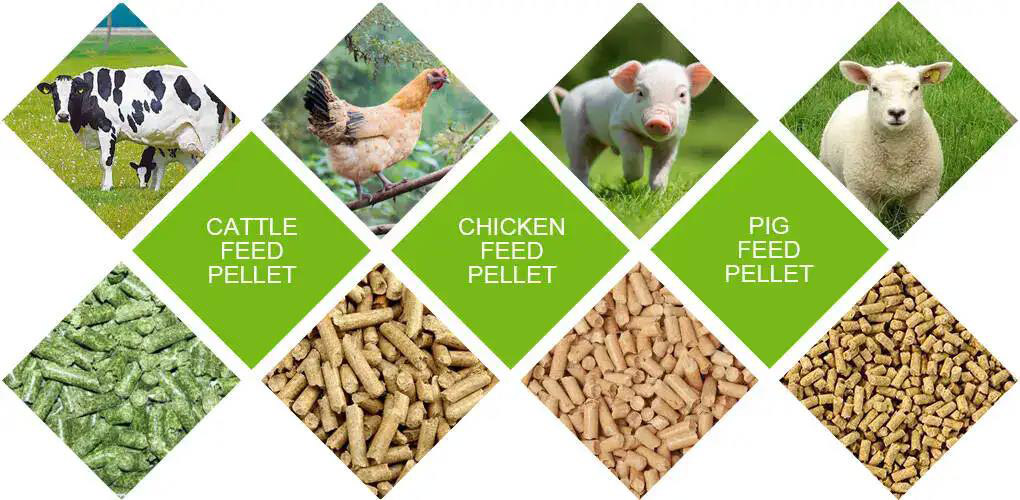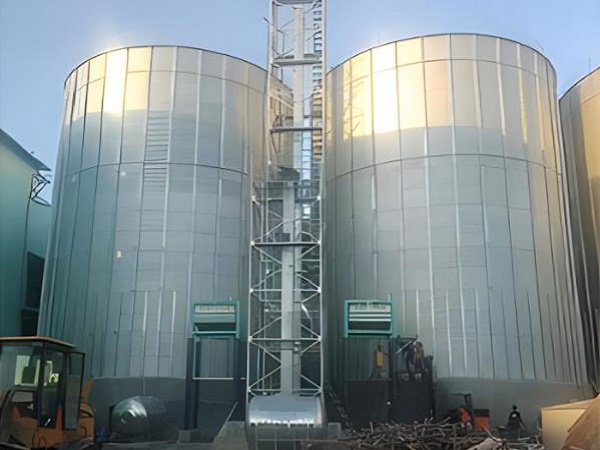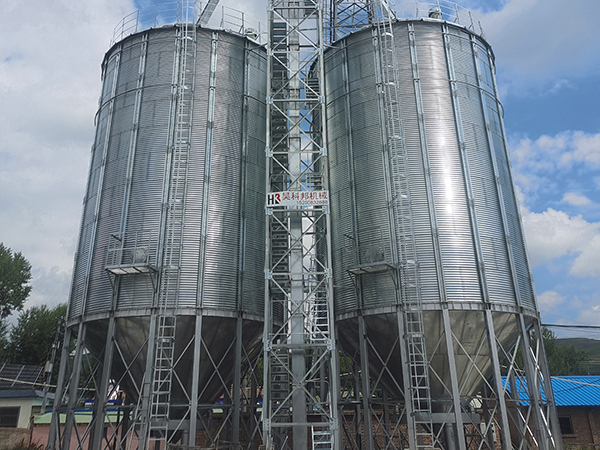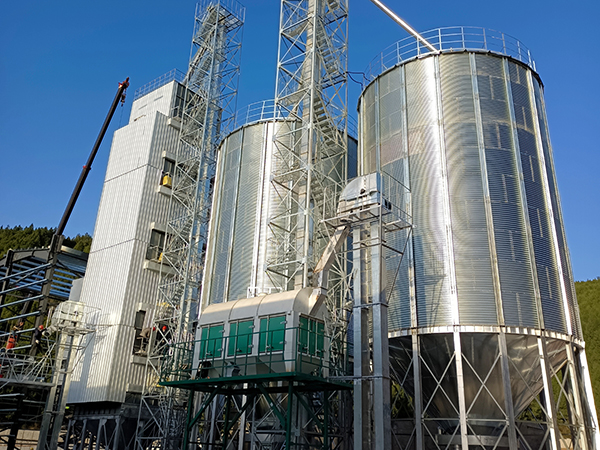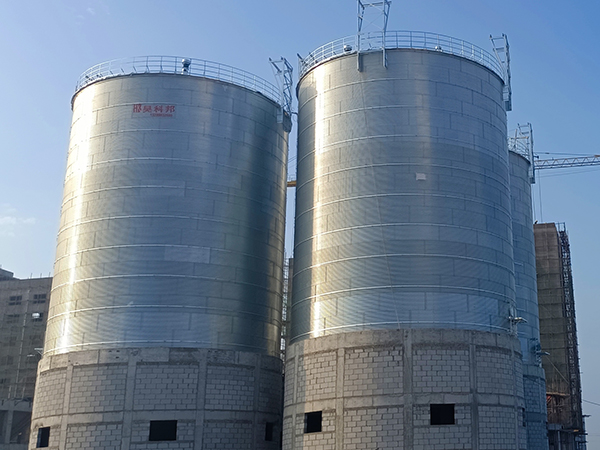duck feed silo
A duck feed silo is a facility specifically designed for storing and distributing duck feed, widely used in duck farms and poultry operations.
duck feed silo Introduction
A duck feed silo is a facility specifically designed for storing and distributing duck feed, widely used in duck farms and poultry operations. The design and structure of duck feed silos effectively protect feed quality, preventing moisture, mold, and contamination while facilitating feed management and usage.


Key Features and Components of duck feed silo
Main Silo Body
Typically made of galvanized steel or other corrosion-resistant materials, the main body is cylindrical or rectangular and can store large quantities of feed. The body is designed to be waterproof and dustproof, ensuring long-term storage without external environmental impact.
Top Cover
Located at the top of the silo, the cover prevents rain, snow, and debris from entering. It is usually well-sealed and may include ventilation holes to maintain air circulation inside.
Inlet
Used for loading duck feed into the silo, usually near the top cover. The inlet may have a lid or sealing mechanism to prevent moisture and contamination.
Outlet
Positioned at the bottom or side of the silo, the outlet is used to dispense feed. It typically includes a control valve to regulate the flow of feed, facilitating feeding management.
Support Structure and Foundation
Provides stability and support for the silo body, usually made of steel and fixed to the ground.
Ladder and Platform
Allow operators to inspect and maintain the silo. The ladder is usually mounted on the outside, leading to a platform at the top for safe access and operation.
Ventilation System
Some silos come with a ventilation system to keep the air circulating inside, preventing the feed from becoming damp and moldy.
Monitoring and Detection Equipment
To ensure feed quality and safety, silos may be equipped with temperature and humidity sensors and surveillance cameras.
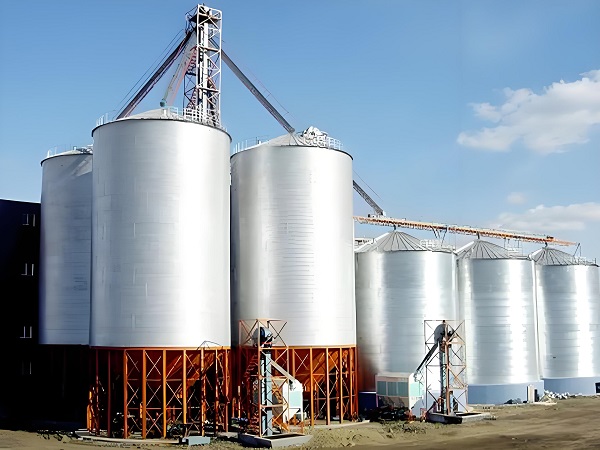
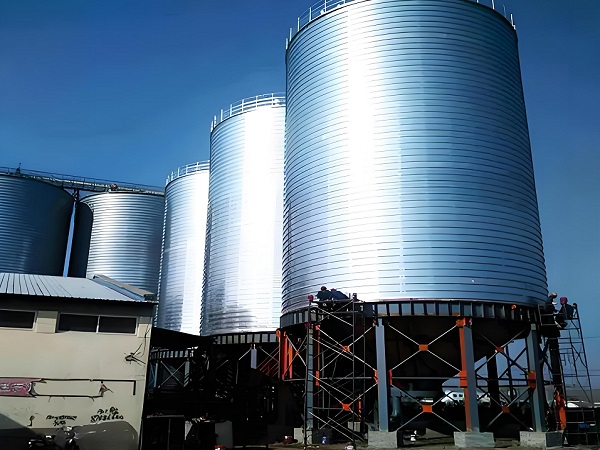
Main Advantages of duck feed silo
Protecting Feed Quality
Effectively prevents feed from moisture, mold, and contamination, ensuring the nutritional value and quality of duck feed.
Increased Efficiency
Automated feeding and dispensing systems reduce manual labor and improve feed management efficiency.
Durability and Low Maintenance
Made from durable materials that withstand harsh weather and daily wear, requiring minimal maintenance.
Hygiene
Easy to clean and maintain, keeping the feed hygienic and preventing bacterial and mold growth.
Space-Saving
Vertical storage design saves ground space, making it suitable for farms and facilities with limited space.
Precise Inventory Management
With monitoring and control systems, precise management of feed inventory ensures timely and adequate feed supply.
Application areas of duck feed silo
Poultry farming
We store feed required for Chickens, ducks and other poultry.
Livestock breeding
We keep feed for cattle, sheep, pigs, horse and other livestock.
Farms
We use them as storage facilities for grains, feed materials, and other agricultural products on farms.
Grain processing and storage industry
We apply them in industries such as oil, feed, flour, starch, and brewing.
Ports and granaries
We use them for storing imported and exported or bulk-transited grains and feed.
Animal husbandry industry
We store feed and water troughs in animal husbandry farms.
duck feed silo technical parameters
Scientifically speaking, the Silo capacity should be measured with volume (m3). Even in the same grain Silo, the storage tons will be different for different grains with different densities. The following table is calculated based on a Silo density of 0.75kg/m3, and surely HKB customizes Silo systems unique for you.
| Most Popular Hopper Bottom Steel Silo Technical Specifications | ||||||||
| Capacity | 50Ton | 100Ton | 150Ton | 200Ton | 300Ton | 500Ton | 1000Ton | 1500Ton |
| Model | TCZK
03605 |
TCZK
04507 |
TCZK
05507 |
TCZK
06406 |
TCZK
07307 |
TCZK
07313 |
TCZK
11010 |
TCZK
12811 |
| Diameter(m) | 3.667 | 4.584 | 5.500 | 6.417 | 7.334 | 7.334 | 11.000 | 12.834 |
| Total Height(m) | 9.56 | 12.53 | 13.25 | 12.85 | 14.70 | 21.42 | 20.95 | 23.51 |
| Volume(m³)
Density:0.75ton/m³ |
69 | 150 | 222 | 273 | 415 | 699 | 1346 | 2039 |
| Most Popular Flat Bottom Steel Silo Technical Specifications | ||||||||
| Capacity | 1000Ton | 1500Ton | 2000Ton | 2500Ton | 3000Ton | 5000Ton | 8000Ton | 10000Ton |
| Model | TCK
10014 |
TCK
11915 |
TCK
13715 |
TCK
15514 |
TCK
15518 |
TCK
18321 |
TCK
24718 |
TCK
25621 |
| Diameter(m) | 10.084 | 11.918 | 13.750 | 15.584 | 15.584 | 18.334 | 24.751 | 25.668 |
| Total Height(m) | 18.69 | 20.34 | 20.87 | 20.30 | 24.78 | 28.60 | 26.99 | 30.60 |
| Volume(m³)
Density: 0.75ton/m³ |
1335 | 2009 | 2701 | 2467 | 4145 | 6693 | 10879 | 13484 |

